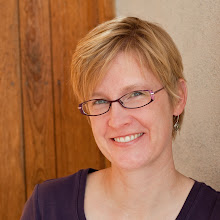I have enough yarn for another big tapestry.
I know this because I just spent all afternoon organizing it and making dye reference cards.
Let me back up.
I finished a big piece a few weeks ago. I know there are many of you waiting to see a photo of it, but you'll have to wait a little longer. I'm still doing the finishing and then it has to take a trip to a very busy photographer.
In the meantime I'm busy dyeing samples for the next piece. I have to make room in the studio for the new set of yarn and so it was time to pack up the yarn from the Lifeline piece. It had migrated into every corner. I gathered it all together and organized it, thanking myself for taking the time to write the dye formula on every ball as I was winding them last year. This will allow me to use this yarn for another piece. There is plenty! (honestly, maybe two pieces. big ones.)
Had I not written the formulas on every ball, I might not be able to tell which gradation they went with and would be much less likely to use the yarn in another piece despite all the work that went into dyeing it. Odd balls without the rest of the set quickly make their way to tapestry workshops to be used by students. Not a bad outcome, but why not use all these great gradations again?
It ended up being 90 colors plus another handful of accent colors pulled off the shelf.
Ninety colors is the number I dyed for that piece.
Ninety.
Each color is dyed in its own pot and each pot takes several hours start to finish. As I was making the color cards I started fantasizing about how wonderful it would be to just order a truckload of yarn from Weavers Bazaar all dyed up and ready to weave. But I fear my process would be missing something vital if I didn't dye my own yarn. For whatever reason, it is what I do.
As a dyer, one of the most important resources you can create for yourself is a file of yarn samples with the dye formulas used to get them. Sometimes it can take many days of sampling in jars to come up with the colors I really want. To have to repeat that work again because I didn't take a few hours to cut pieces of the yarn and write down the formulas would be silly.
So the afternoon found me on the floor of the studio cataloging the yarn for my sample books.
I make a set of cards for each dye project which is usually for a for a tapestry, though sometimes for a workshop I'm teaching. I simply write the formula and depth of shade next to a hole punched on cardstock and put a generous piece of that yarn through the hole. These cards go in a three-ring binder. These binders along with the dye sample books of Ginny Phillips and Deb Menz/Sara Lamb are indispensable resources when planning colors for a new tapestry.
I'm in the middle of dye sampling for a new piece. Stay tuned for more photos of those gradations.
Now the question is, where am I going to store this yarn until I am ready to do a piece in these colors again? My yarn shelf is almost full. I suspect the student workshop yarn is going to get relegated to boxes. Sssshhhh, they'll never know.
Subscribe to:
Post Comments (Atom)








Rebecca....you mentioned Ginny Phillips and Deb Menz/Sara Lamb sample dye books.....what do you mean please? Janie
ReplyDeleteHi Janie. Ginny Phillip's book isn't available anymore unfortunately. But If you go to Deb Menz's website and look for Color by Number Basic Book (there is a second one also)
Deletehttp://www.debmenz.com/Books_and_Videos
You'll see it. It is a big binder full of actual samples of yarn and the formula used to get that color yarn. This is the kind of book that I create for myself, but the work of Deb and Sara in producing these binders full of yarn samples is astronomical and does save me a lot of time. Each book is $300 and believe me, it is worth the cost. Imagine how much time it takes to dye all those colors (hundreds and hundreds) and then put them in a book like this. Unbelievable that you can even buy something like this. I am working on another blog post about dyeing so I'll add a photo of the inside of the books so you can see what it looks like.